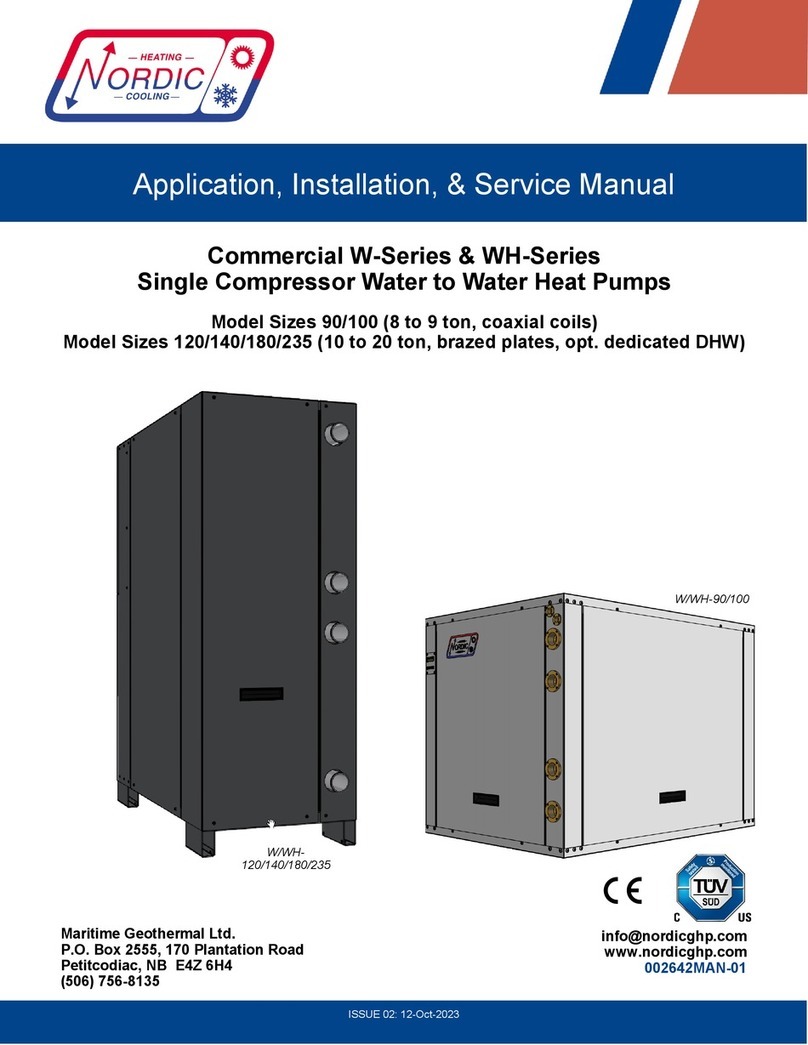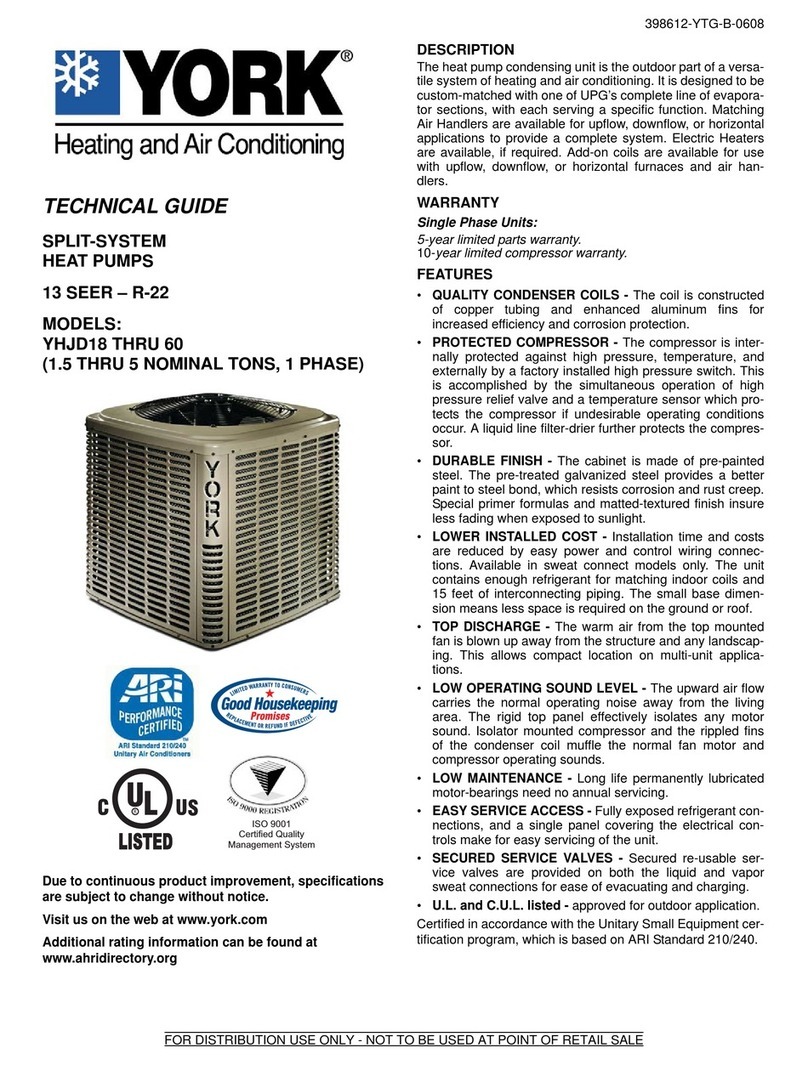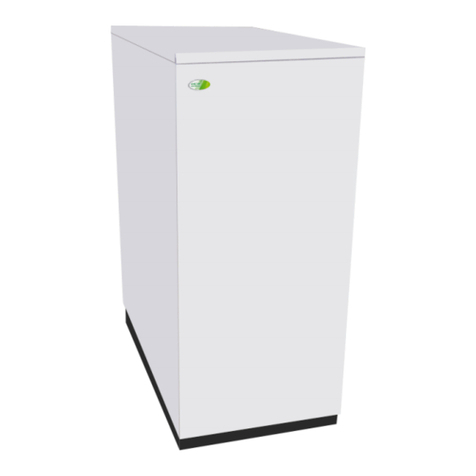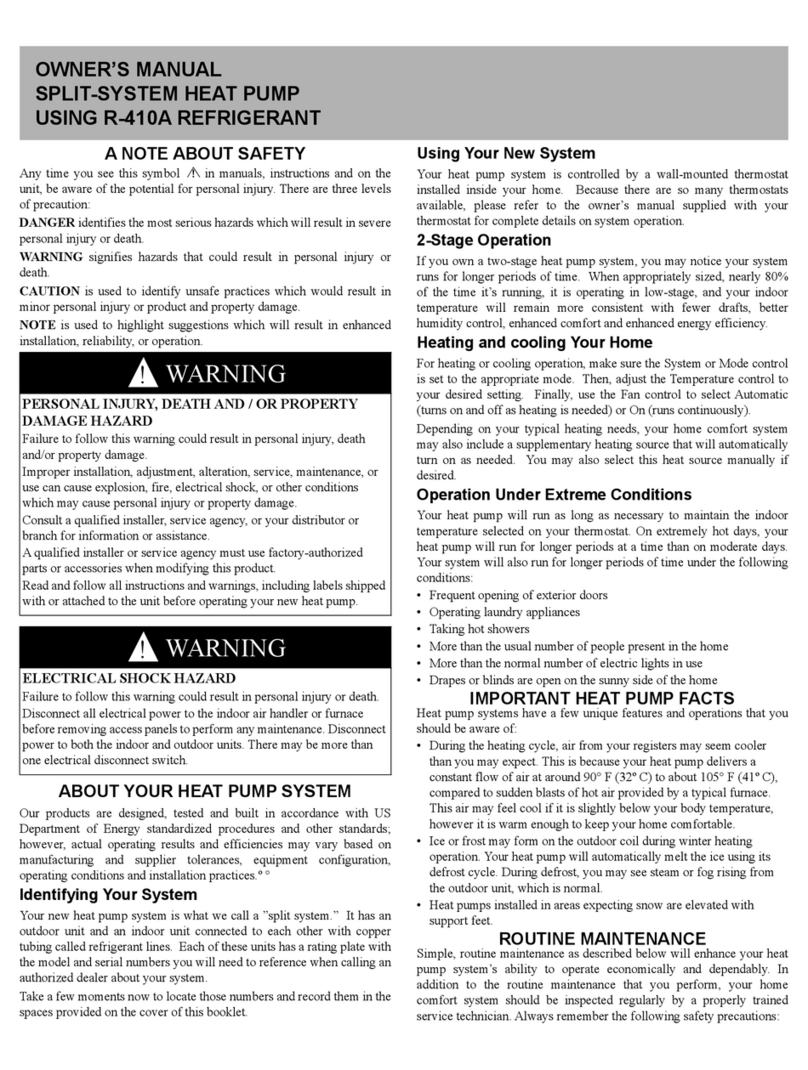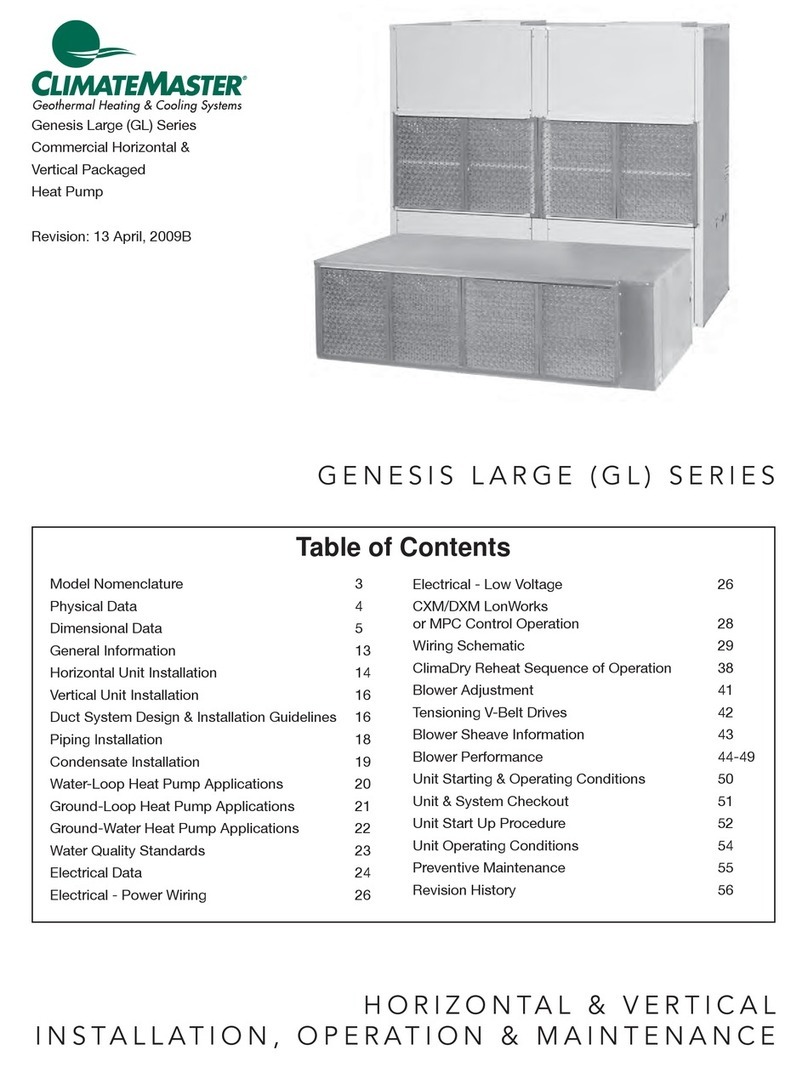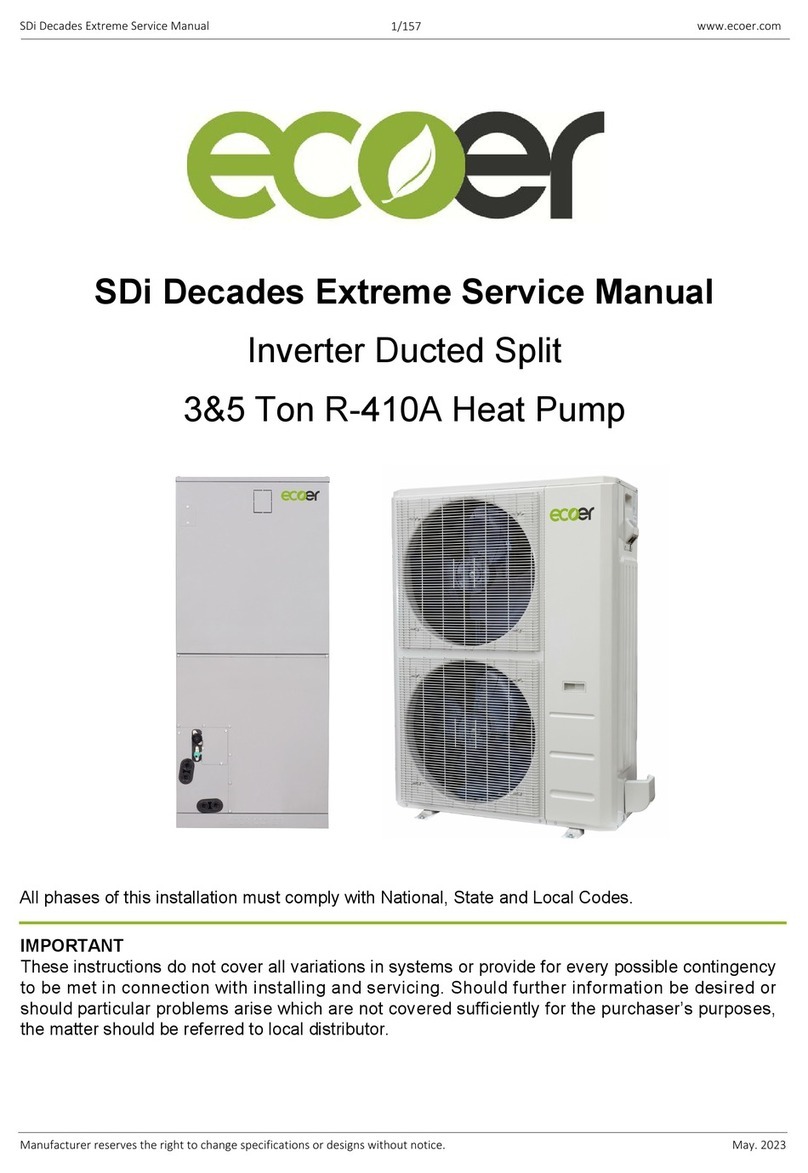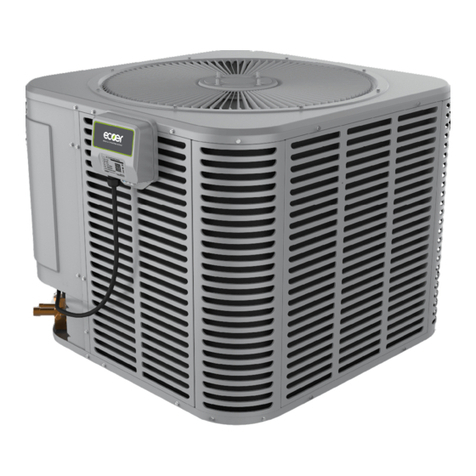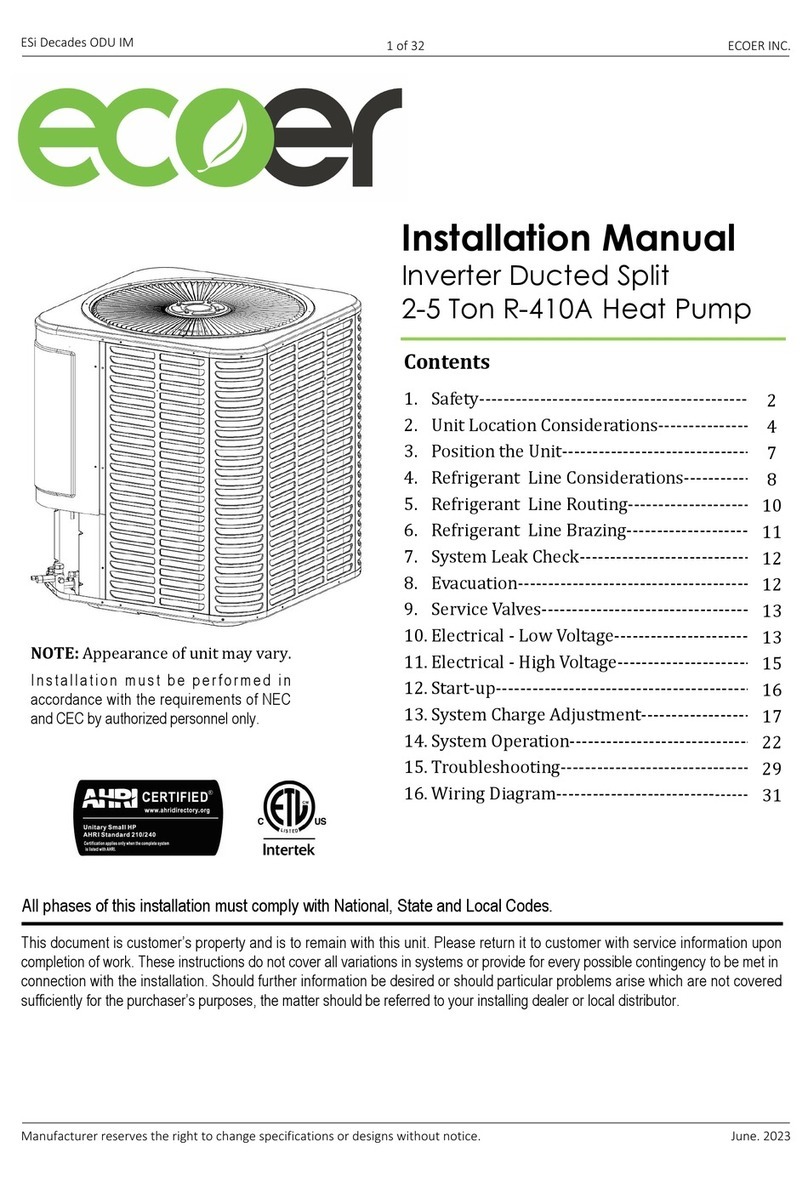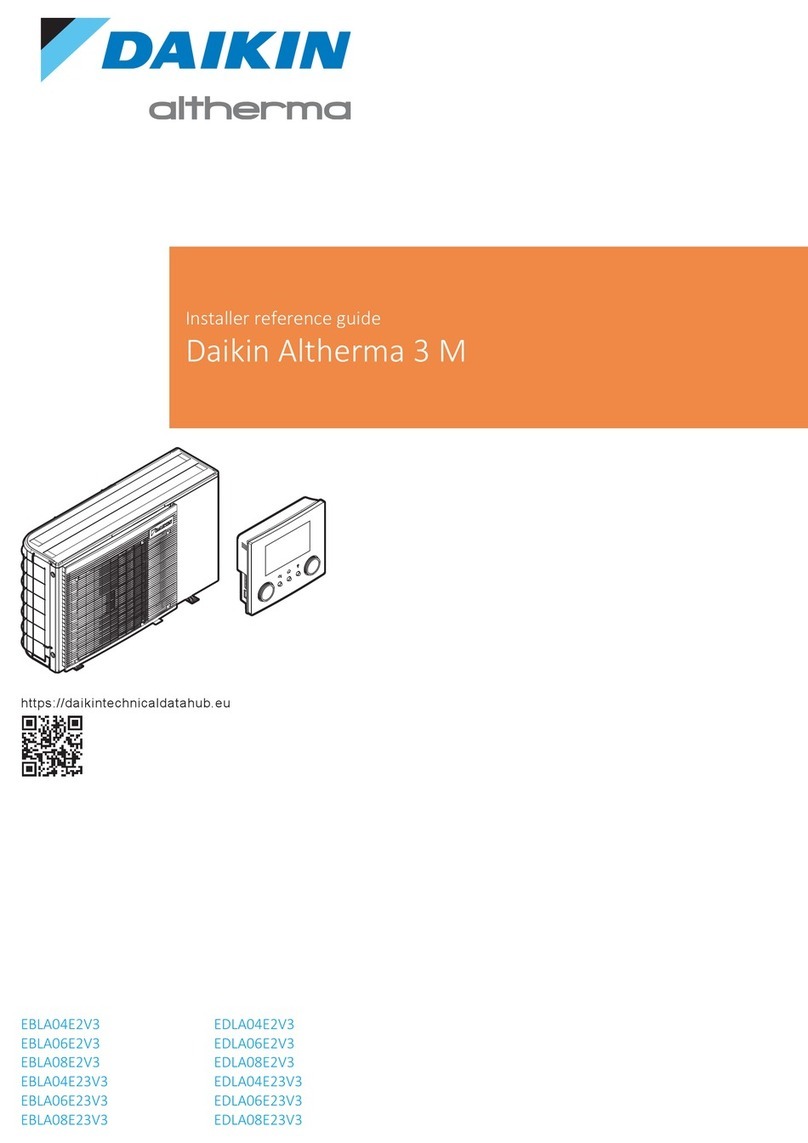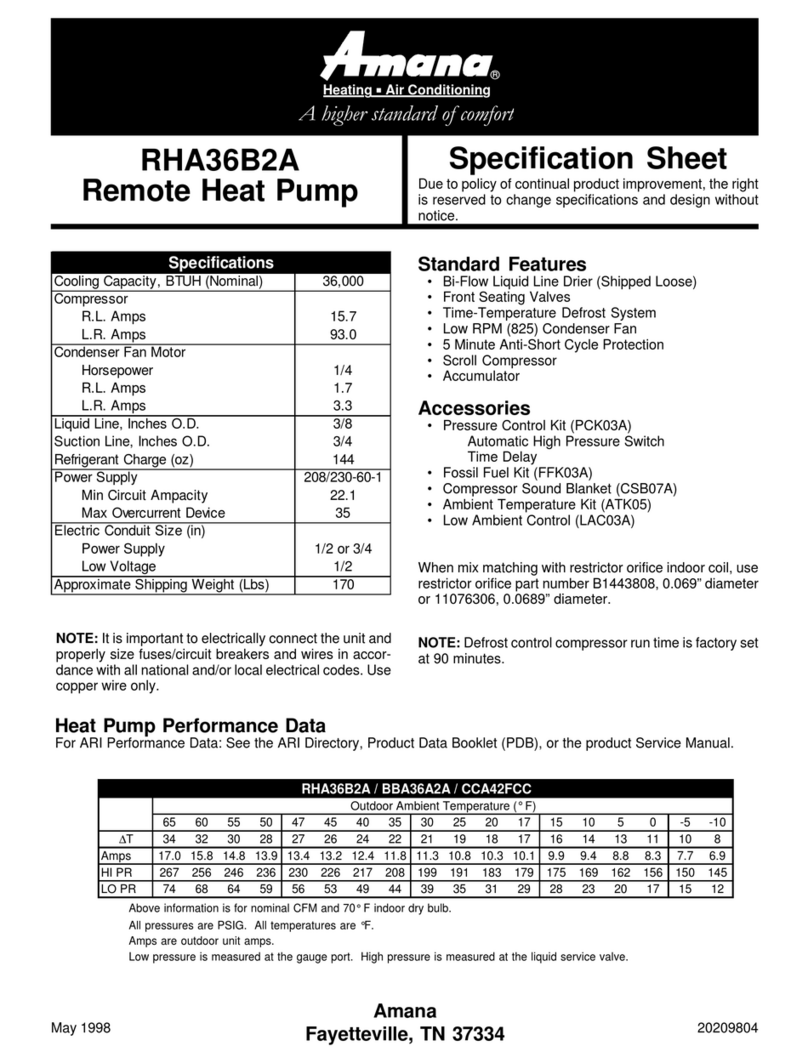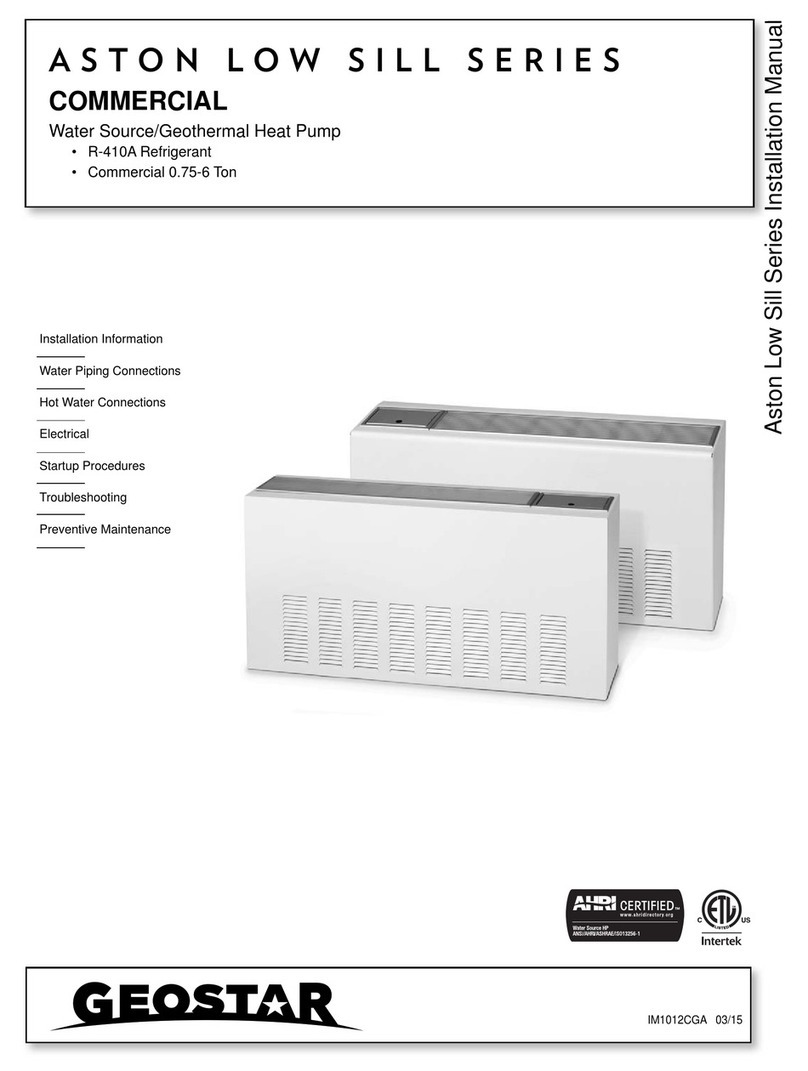33-3/16 x29-1/8 x29-1/8
2.2 Unit Dimensions
2. Unit Location Considerations
Table 2-1 Condensing unit dimensions
Units are packaged for shipment to avoid damage
during normal transit and handling. It is the receiving
party’s responsibility to inspect the equipment upon
arrival. Any obvious damage to the carton box should be
reported on the bill of lading and a claim should be filed
with the transportation company, and the factory
should be noticed.
All units should be stored in the factory shipping carton
with internal packaging in adry place until installation.
Carefully remove the packaging and inspect for hidden
damage. Any hidden damage should be recorded and
the factory should be notified. The gauge port can be
used to check the refrigerant charge has been retained
during shipment.
2.1 Inspect Units
Fig 2-1 Check damage
Fig 2-2 External dimensions
Two models sharing the same chassis are suit for most
residential air conditioner and heat pump applications.
When mounting the condensing unit on a roof or pad, be
sure its dimension no less than 29in x29in.
H
D
2.3 Location Restrictions
Exposure to a corrosive environment may shorten the life of the equipment, corrode metal parts, and/or
negatively affect unit performance. Corrosive elements include, but are not limited to: sodium chloride,
sodium hydroxide, sodium sulfate, and other compounds commonly found in ocean water, sulfur,
chlorine, fluorine, fertilizers, and various chemical contaminants from industry/manufacturing plants. If
installed in areas which may exposed to corrosive environments, special attention should be given to the
equipment placement and maintenance.
•Lawn sprinklers/waste water should not spray directly on the unit cabinet for prolonged periods.
•In coastal areas: locate the unit on the side of the building away from the waterfront.





















